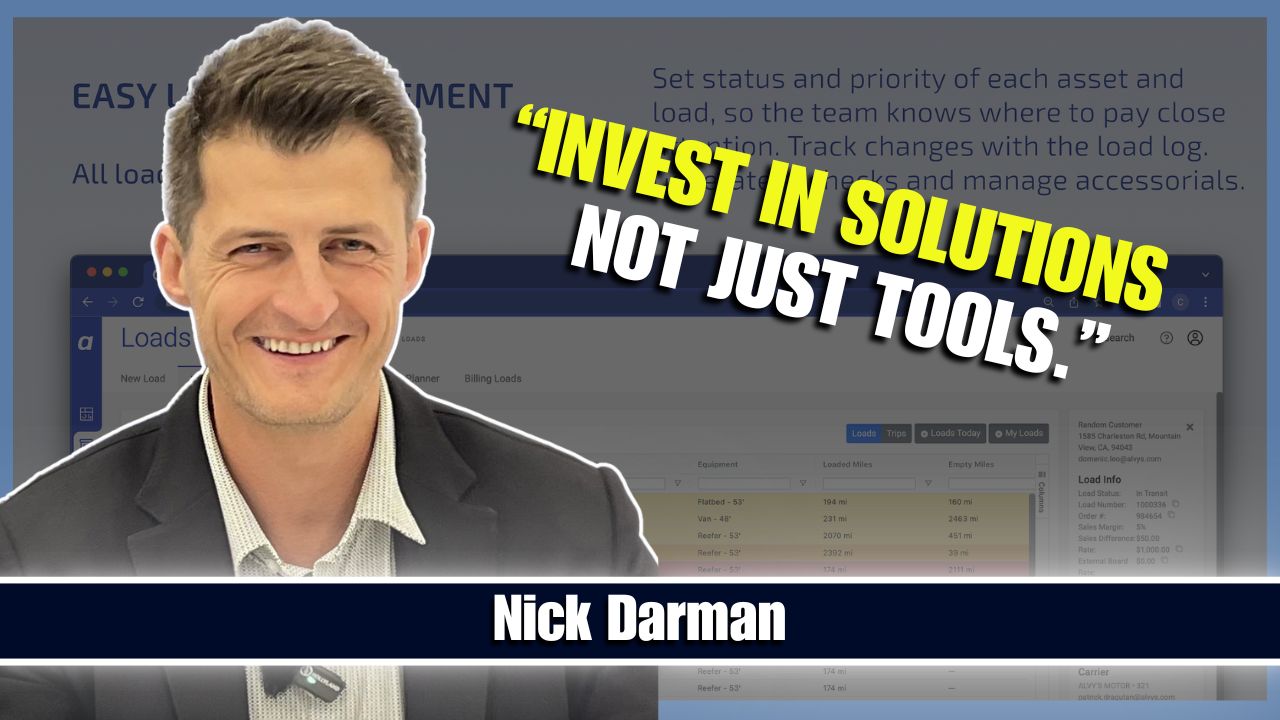Many small trucking fleet owners and independent owner-operators face a common challenge: growing a small trucking fleet from just one truck to a reliable, profitable small fleet. This stage can be the most difficult but also the most important for long-term success. At Miles and Mentors, we understand that growing a small trucking fleet is about more than just adding more trucks; it’s about building a solid foundation that can support future success. In this article, we’ll share proven strategies for growing a small trucking fleet, drawing on Anthony Villanueva trucking insights to help you succeed.
The Challenges of Growing a Small Trucking Fleet
Expanding from one truck to five is often the toughest step in scaling a trucking business. Anthony explains that this transition involves moving from simply operating a truck to managing an entire trucking company. Owner operator fleet growth at this stage demands careful planning, financial discipline, and a flexible growth plan for trucking companies that can handle real-world challenges.
Anthony emphasizes that understanding the real costs of expanding a trucking fleet is critical. Too many small fleet owners dive in without realizing how quickly costs like maintenance, insurance, and fuel can add up. Without a solid growth strategy and cash flow management, it’s easy to get overextended.
How to Grow a Trucking Fleet
If you’re wondering how to grow a trucking fleet, start by evaluating your current operations and setting clear benchmarks for fleet growth. Identify your most profitable lanes, your best customers, and any gaps in your operations. Anthony Villanueva trucking insights show that starting with this analysis allows you to create a trucking business growth roadmap tailored to your goals.
Next, invest in reliable equipment and consider truck fleet expansion into niche markets like refrigerated freight or oversized loads. This diversification can be a game-changer for small trucking company growth strategies.
Small Trucking Company Growth Strategies
Anthony recommends small trucking company growth strategies that include:
- Investing in fleet management software to track performance and reduce downtime.
- Building strong relationships with shippers, brokers, and other carriers to secure consistent freight.
- Implementing flexible growth plans for trucking companies that can adapt to changes in the market.
- Using trucking fleet expansion tips like route optimization and fuel management to control costs.
These strategies, combined with realistic benchmarks for fleet growth, create a strong foundation for small fleet management and long-term success.
How Many Trucks Are Considered a Small Fleet?
In the trucking industry, a small fleet typically has between two and ten trucks. Anthony points out that expanding from one truck to five is the most significant step in fleet size growth tactics because it shifts your focus from a single vehicle to a coordinated team effort. At this size, your trucking business can offer more flexible services and reduce the risk of downtime.
Benchmarks for Fleet Growth and Flexible Growth Plans
Setting clear benchmarks for fleet growth is essential. Anthony advises owners to measure performance by revenue per truck, cost per mile, and customer satisfaction ratings. These trucking fleet growth benchmarks help you track progress and identify areas for improvement.
Flexible growth plans for trucking companies are equally important. The trucking industry changes rapidly, so be ready to adjust your plan based on market demands, fuel prices, and regulatory changes. Anthony’s experience shows that being adaptable is key to avoiding mistakes in trucking fleet expansion.
Trucking Fleet Expansion Tips
Here are a few trucking fleet expansion tips to guide you:
- Use fleet management software to monitor truck performance and maintenance schedules.
- Recruit and retain quality drivers with competitive pay and benefits.
- Leverage data and reporting tools to identify your most profitable freight lanes.
- Monitor cash flow closely to ensure you have enough working capital for unexpected expenses.
Anthony explains that the most successful owner operator growth strategies combine technology, strong relationships, and adaptability.
How to Expand Your Trucking Company
Expanding your trucking company requires more than just adding more trucks. Anthony recommends focusing on efficiency and customer service. Consider offering specialized freight services to tap into new markets and keep your drivers engaged.
Owner operator fleet growth depends on building a culture of accountability and open communication. Small fleet management also involves understanding the cost of expanding a trucking fleet and ensuring that each new truck contributes to your bottom line.
Small Fleet Challenges and How to Overcome Them
Growing a small trucking fleet comes with unique small fleet challenges, including:
- Recruiting and retaining drivers who align with your growth plans.
- Managing cash flow to cover operational costs and new equipment.
- Staying compliant with federal and state regulations to avoid fines.
Anthony shares that overcoming these challenges requires setting realistic expectations and investing in both people and technology.
How Much Do Small Fleet Owners Make?
Earnings for small fleet owners vary widely, but those who manage their operations carefully often earn significantly more than single truck owner-operators. Anthony says the key is to follow trucking business growth roadmap best practices, including tracking cash flow, controlling expenses, and building strong customer relationships.
The Role of Technology in Truck Fleet Expansion
Anthony highlights the importance of using fleet management software and telematics to track fuel usage, driver behavior, and vehicle performance. These tools are essential for scaling a trucking business and making data-driven decisions.
A transportation management system (TMS) can also simplify dispatching, load tracking, and invoicing, making your trucking company more professional and efficient.
Financing and Managing Growth in Trucking
Growing a small trucking fleet often requires financing. Anthony recommends working with lenders or factoring companies that understand the trucking industry and can provide flexible financing options. Managing growth in trucking means staying disciplined with your cash flow and avoiding taking on more debt than your business can handle.
Fleet Growth Best Practices and Final Tips
Anthony shares these fleet growth best practices:
- Communicate with your drivers regularly to identify and address challenges.
- Stay informed about changes in the trucking industry and market demands.
- Continuously refine your trucking business growth roadmap to stay ahead of the competition.
By following these trucking fleet expansion tips and leveraging Anthony Villanueva trucking insights, you can build a small fleet that is profitable, adaptable, and ready for long-term success.
Ready to Start or Grow Your Trucking Fleet?
If you’re starting a trucking business or growing your fleet and need expert insights, reach out to us today. Our partners can help you make the right decisions for long-term success. Your journey from one truck to five can be the most important step in creating a thriving, resilient business.



